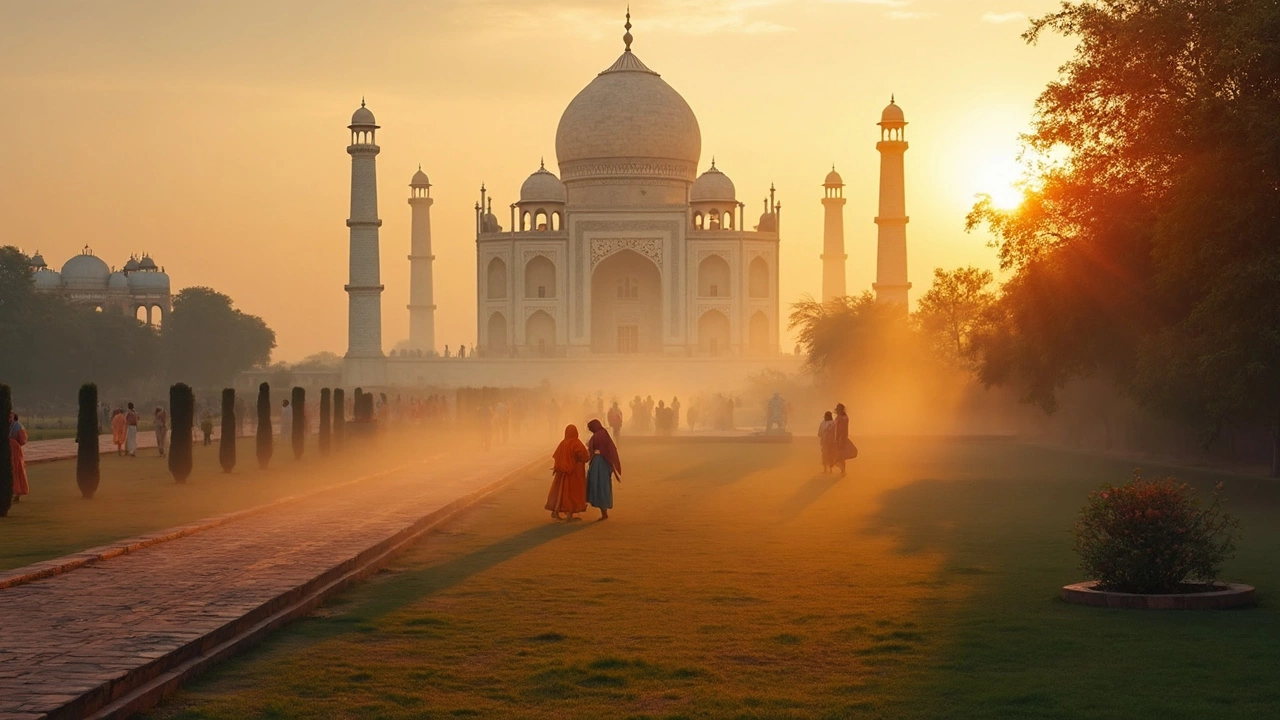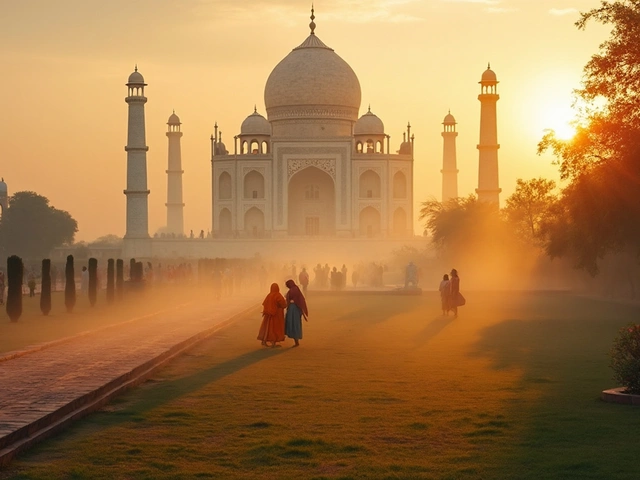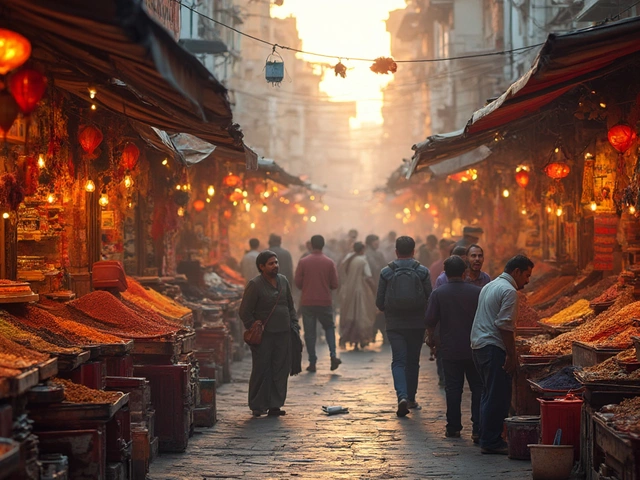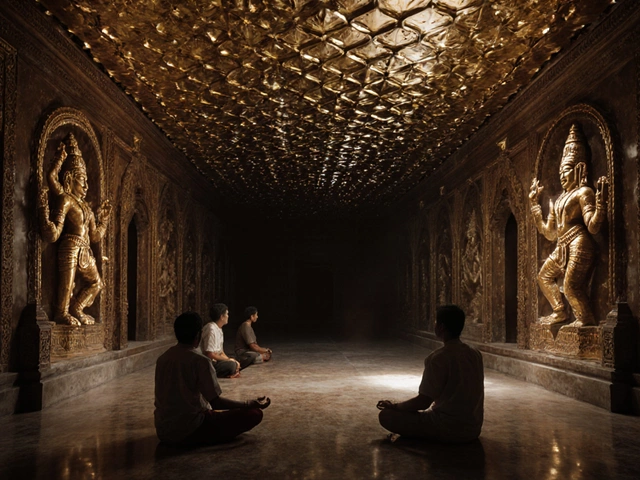North India is all about extremes. Summers burn up the plains, while winters sometimes paint the mountains with snow. If you land here in May, for example, you’ll think someone stuck a hairdryer in your face—Delhi and the Golden Triangle get seriously hot, with temperatures soaring above 40°C. But just a few months later, monsoons sweep in and cool things off, though you might get caught in a sudden downpour in places like Jaipur or Varanasi.
The magic window? Most travelers swear by October to March. This stretch feels like North India is finally showing its best side—clear skies, comfortable days (usually 15–25°C), and chilly evenings that make bustling markets in Old Delhi or sunrise at the Taj Mahal feel just right. Trekking in the Himalayas? After September, the snow starts to melt away, and the trails open up without the muddy chaos of the rains.
- Seasons in North India: What to Expect
- Weather Patterns and Regional Highlights
- Festival Fever: When Culture Comes Alive
- Smart Tips for Planning Your Trip
Seasons in North India: What to Expect
North India packs in four distinct seasons: summer, monsoon, autumn, and winter. If you plan your trip around these, you’ll skip the worst weather and catch the region when it’s easiest to explore. The differences aren’t subtle—timing your visit can shape your whole experience, especially if you want fresh views of the Himalayas or cooler days in historic cities. Here’s how the seasons break down:
| Season | Months | Typical Temperature Range | Best Place to Experience |
|---|---|---|---|
| Summer | April - June | 25–45°C (77–113°F) | Shimla, Manali |
| Monsoon | July - September | 22–35°C (71–95°F) | Rishikesh, Dharamshala |
| Autumn | October - November | 15–28°C (59–82°F) | Agra, Jaipur |
| Winter | December - March | 5–20°C (41–68°F) | Delhi, Varanasi, Himalayan towns |
Summer isn’t gentle in most lowland cities—think of Delhi’s streets in June, and you’ll understand why locals escape to hill stations like Shimla and Manali. Monsoon, which hits around July, brings short but heavy bursts of rain. This is when places like Rishikesh and Dharamshala get lush and green, but be ready for muddy backroads and slippery hills.
When autumn rolls around, the skies clear up and the air cools down. Tourists start returning, and the Taj Mahal finally looks inviting again. This is when the Best time to visit India buzz starts online. Winter in North India holds some surprises. Plains get chilly, but not freezing—great for outdoor exploring and city walks. And if you’re set on snow, January in Manali or Auli won’t let you down.
If you want to dodge the extreme heat or avoid traveling during heavy rains, target autumn and winter from October to March. This window is what most guides and locals recommend for smooth travel, fun sightseeing, and legendary North India street food tours without sweating buckets.
Weather Patterns and Regional Highlights
Knowing what to expect from North India’s weather can make or break your trip. The region isn’t just one climate zone—Delhi’s winter, for example, is way different than a mountain village in Himachal. Here’s a breakdown to help you match your plans with the right season.
Best time to visit India—let’s talk straight: if you’re eyeing spots like Agra, Jaipur, or Delhi, winter (October to March) is the sweet spot. These months see average highs around 20–25°C, with cool mornings and evenings. Bring a light jacket if you don’t like getting chilly at night. You’ll get crystal clear views at the Taj Mahal and way less sweat.
| Region | Best Months | Average Temp (°C) | Weather Highlight |
|---|---|---|---|
| Delhi/Agra/Jaipur | Oct–Mar | 15–25 | Pleasant days, chilly nights |
| Varanasi | Nov–Feb | 14–28 | Mist on the Ganges |
| Rajasthan (Jaisalmer/Udaipur) | Nov–Feb | 10–25 | Dry, sunny, perfect for forts |
| Himachal/Uttrakhand | Apr–Jun or Sep–Nov | 8–22 | Clear hiking weather |
Summer lasts from April to June and gets brutally hot in the plains—daytime temps often climb past 40°C. Locals actually leave cities for the Himalayas this time of year. If you’re curious about the mountains, April to June is mild and green. By July, the monsoon sweeps in and brings heavy rain, especially in hill towns like Dharamshala or Rishikesh. While the rains can be beautiful and the air smells fresh, landslides and travel disruptions happen a lot.
- If you want zero crowds and can handle heat, visiting Taj Mahal super early during summer pays off.
- Hill stations—Shimla, Manali, Mussoorie—are cooler escapes when the plains cook. Book hotels in advance during May and June; locals fill up these spots for summer getaways.
- If you’re after snow, the window is slim (December to February) and only up north in places like Manali or Auli.
Fact: Varanasi’s famous Diwali on the Ganges is only in late autumn—misty mornings, cool evenings, and epic river views. Rajasthan’s big forts and palaces are honestly unbearable in summer, but winter? You’ll actually enjoy roaming the courtyards.
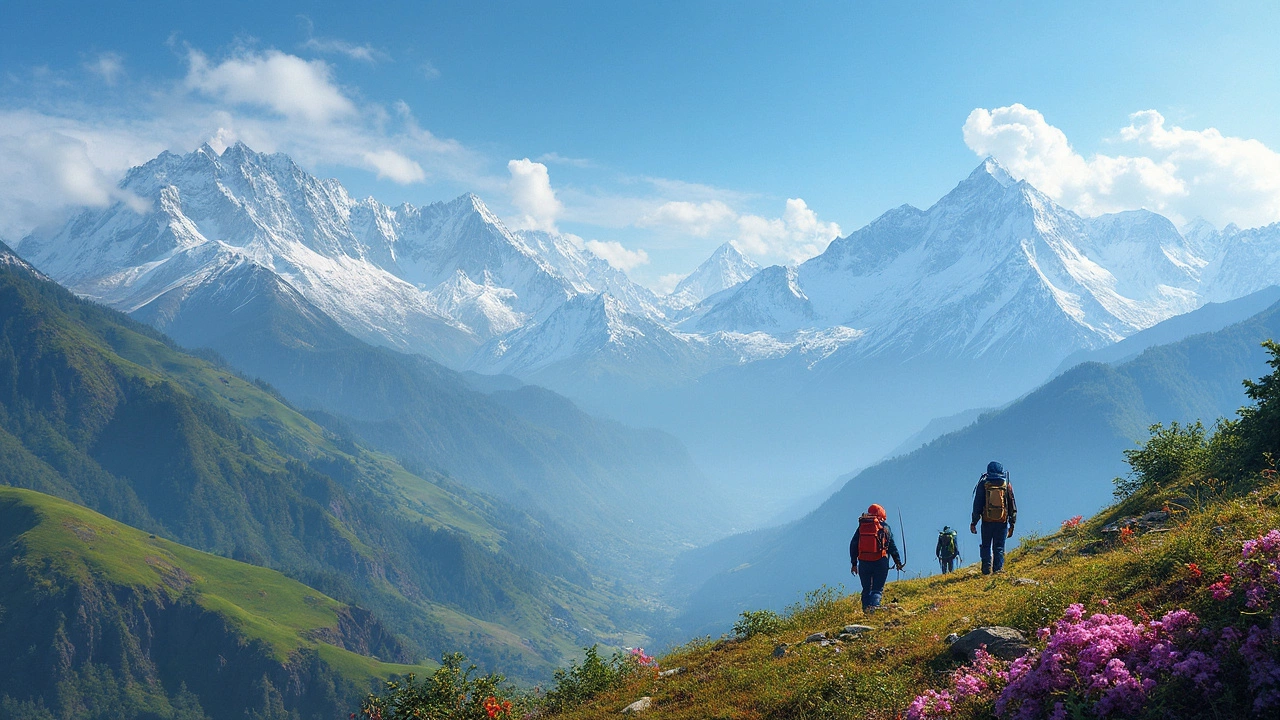
Festival Fever: When Culture Comes Alive
North India isn’t shy when it comes to big celebrations. The festival season is a total sensory overload—in the best way. If you’re hoping to score the most authentic cultural experience, timing your trip around a major holiday is worth it. Between October and March, things kick into high gear, especially with Diwali and Holi leading the pack.
Best time to visit India might just be when the lights of Diwali turn Delhi, Jaipur, and Varanasi into a glowing wonderland. Usually falling in October or November, this is when families light up their homes, bursting crackers, and everyone’s sharing sweets. It’s not just a beautiful sight, but a real window into local life. Another biggie: Holi, the famous festival of colors, usually lands in March. Get ready to be pelted with bright powder and water balloons—old and young, tourists and locals, everybody’s fair game!
Not every festival is about crowds and noise either. If you prefer something calmer, check out the Pushkar Camel Fair in Rajasthan, held in November. Here, you can see thousands of camels, quirky competitions, and even a mustache contest. Further north in Amritsar, Guru Nanak Gurpurab lights up the Golden Temple with thousands of candles and nonstop kirtans (hymns). And for music fans, the Jaipur Literature Festival in January draws writers and readers from all over the world.
| Festival | Usual Month | Typical Location |
|---|---|---|
| Diwali | October/November | Delhi, Jaipur, Varanasi |
| Holi | March | Vrindavan, Mathura, Delhi |
| Pushkar Camel Fair | November | Pushkar, Rajasthan |
| Guru Nanak Gurpurab | November | Amritsar |
| Jaipur Literature Festival | January | Jaipur |
Planning tip: Book your hotel early—rooms vanish fast during major festivals. And pack old clothes for Holi (no kidding, the colors don’t wash out easily). Some spots, like Vrindavan and Mathura, fill up months ahead with festival-goers. If you’re the type who wants to see India at its liveliest and get into the heart of local traditions, these festivals aren’t just worth seeing—they’re unforgettable.
Smart Tips for Planning Your Trip
Once you pick your season, it’s time to start working out the details. North India is massive—distances are long, traffic gets wild, and weather quirks can mess with the best-made plans. Here’s how to keep your trip as smooth (and fun) as possible.
- Book trains and flights early. October to March is peak travel time, so trains to places like Agra, Jaipur, and Varanasi fill up weeks in advance. The same goes for flights, especially around festivals like Diwali and Holi. Snap up those tickets as soon as you know your dates.
- Hotels follow the same rule. Popular spots like Amritsar or Rishikesh get crowded with both local and international tourists. Don’t trust last-minute deals—you’ll end up paying more or staying somewhere dodgy.
- Pack for surprise weather. You can go from misty mornings in Delhi to warm afternoons in Jodhpur. Bring layers, a sun hat, sunscreen, and something waterproof. December and January can be colder than you’d think, even in Rajasthan. If you’re heading into the hills, add a warm jacket and sturdy shoes.
- Watch out for festival dates. Traveling during Diwali or Holi? Expect the best street parties ever—but get ready for pricier hotels and jammed roads. If you’re not a fan of crowds, try the week before or after big holidays.
- Health matters. Tap water isn’t safe, so only drink bottled or filtered water. Carry hand sanitizer everywhere. Bring basic meds for stomach troubles; new food can catch visitors off guard. Mosquitoes like the post-monsoon months, so pack repellent.
If you love seeing stats before you plan, here’s a quick snapshot of what to expect on typical trips in North India’s best season:
| City | Peak Season Avg. Temp (°C) | Rainfall (mm) | Popular Festival/Events |
|---|---|---|---|
| New Delhi | 13–25 | 10–20 | Diwali (Oct/Nov), Republic Day (Jan 26) |
| Agra | 12–27 | 5–15 | Taj Mahotsav (Feb) |
| Varanasi | 15–26 | 15–25 | Dev Deepawali (Nov), Holi (Mar) |
| Jaipur | 10–27 | 5–10 | Jaipur Lit Fest (Jan), Diwali (Oct/Nov) |
One more thing: check air quality if you’re planning city visits in November or January. Smog can get bad in Delhi and surrounding areas. Sites like IQAir or AirVisual can give you real-time info, so you’re not caught off guard.
If you travel with pets (like my Luna), keep in mind India isn’t the easiest place for four-legged companions. Most hotels don’t allow dogs, and city crowds can be stressful. Best to leave your furry friend in safe hands at home.
Plan a bit, keep your days flexible, and you’ll avoid most headaches. It's the small prep steps that let you enjoy the Best time to visit India for all it’s worth.
